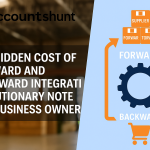Business Lessons from Singapore’s Tourism Industry: A Masterclass in Monetization
Last week, I was on a family vacation in Singapore. Beyond the breathtaking attractions and world-class infrastructure, what truly fascinated me was how Singapore has masterfully turned tourism into a high-yield business engine.
Here are some key business lessons I observed that can be applied to almost any industry:
1. Break Down Offerings into Sub-Products
At most attractions—Gardens by the Bay, Jewel Changi Airport, or Sentosa Island—each experience is broken into multiple, independently chargeable sections. For example, at Gardens by the Bay, you don’t just buy a single ticket. You pay separately for Cloud Forest, Flower Dome, Supertree Observatory, and others. The same model is seen across other attractions like the Sky Luge, Dolphin Island, and Universal Studios.
💡 Lesson: Instead of offering one bundled product, divide your main offering into smaller sub-products. Each can be priced moderately yet carry a perceived premium value. This allows for higher revenue per customer without overwhelming them upfront.
2. Cross-Sell Strategically with High Footfall
Nearly every attraction ends by funneling you through a gift shop. Regardless of whether we intended to buy anything, we found ourselves spending freely—especially with kids in tow. Over the week, we spent approximately ₹25,000 on toys, souvenirs, and random merchandise.
💡 Lesson: Every customer you acquire has a cost. Maximize the value from that customer through well-placed cross-selling and complementary products.
3. Showcase Before You Sell
At every major activity, there were photographers waiting with professional setups. They clicked photos without asking and handed us a QR code to view them later at a counter. Some attractions even used wearable QR tags to track and capture you in action automatically. Though we had our own camera, we ended up spending nearly ₹15,000 on these photos—because the moments they captured felt more special.
💡 Lesson: Don’t try to sell everything upfront. Instead, offer a taste, create desire, and then provide opportunities to buy. Let your product prove its value before the customer even realizes they want it.
4. Creative Promotion & Smart Bundling
Every attraction was uniquely branded and creatively marketed. They used compelling visuals, themes, and combo offers—like pairing food or gifts with express passes—to enhance perceived value. Each element of the experience was designed to promote the next, creating a continuous sales funnel.
💡 Lesson: Invest deeply in creative marketing. Promote each product with its own identity. Use bundles, limited-time offers, and experience-driven messaging to make your value loud and clear.
5. Offer Premium Versions for Premium Pricing
Singapore’s express passes are genius. Standard ticket queues can run over 1.5 hours. Once you’ve experienced that, upgrading to a 110 SGD express pass (on top of an 83 SGD ticket) feels less like a luxury and more like a necessity. And yes—we bought it.
💡 Lesson: Always offer a premium upgrade. There’s a segment of customers who will happily pay more for speed, exclusivity, or convenience. Give them that option.
Final Thoughts
Singapore’s tourism model is a masterclass in business design. It’s not just about the attraction—it’s about how you structure the experience, price it, and maximize every customer touchpoint. Whether you’re in services, retail, SaaS, or hospitality, there’s something here for every business owner to learn.


